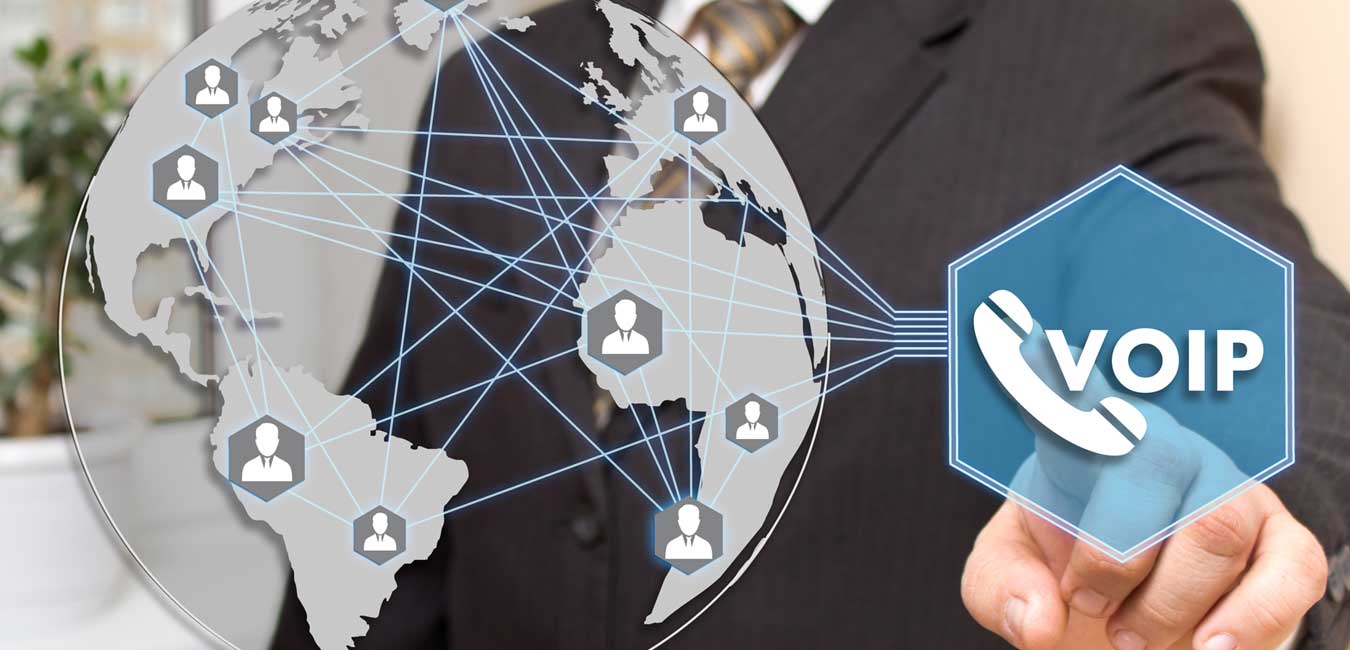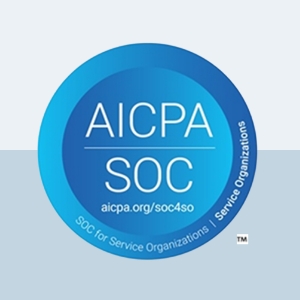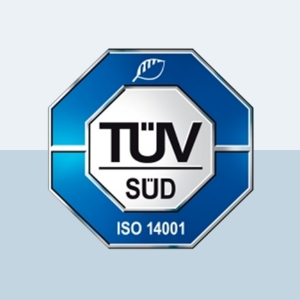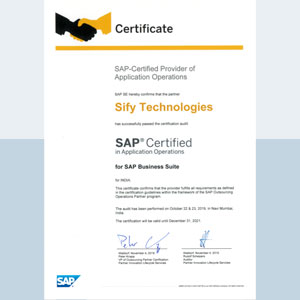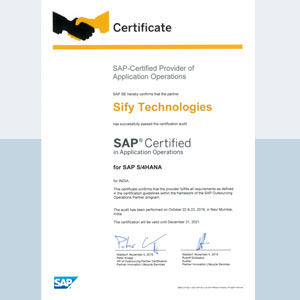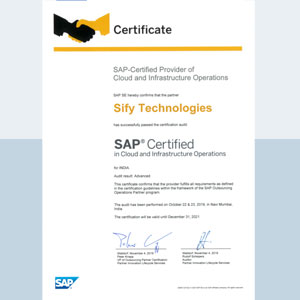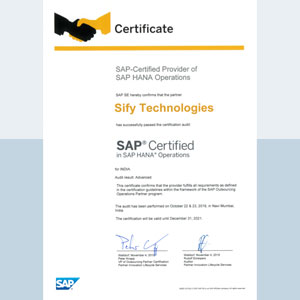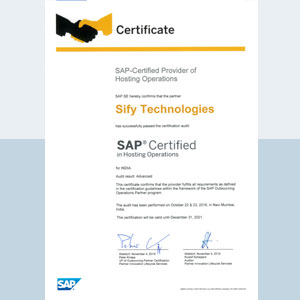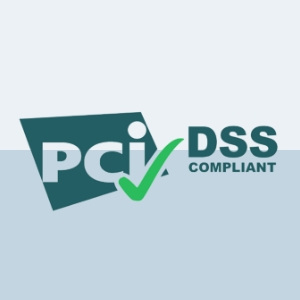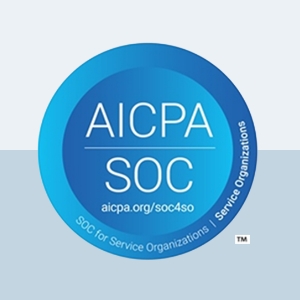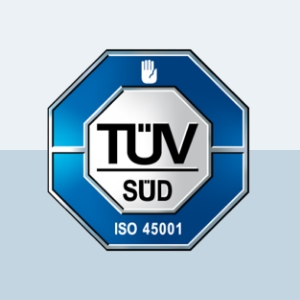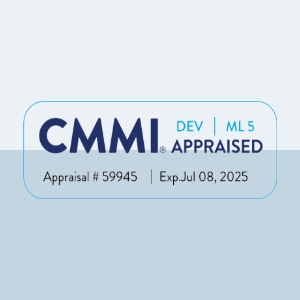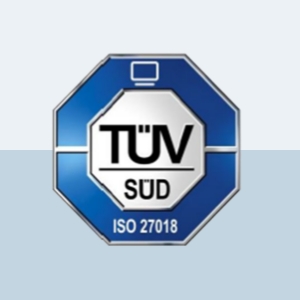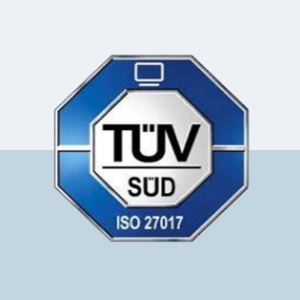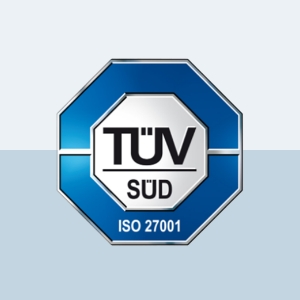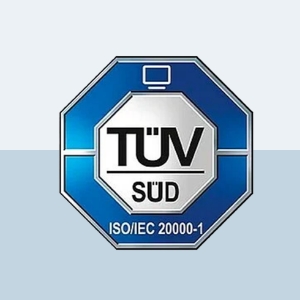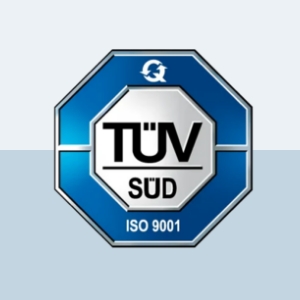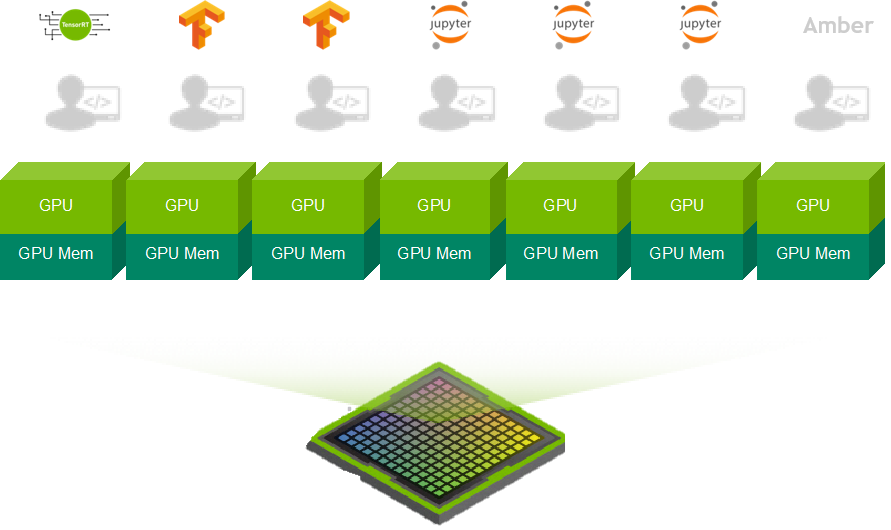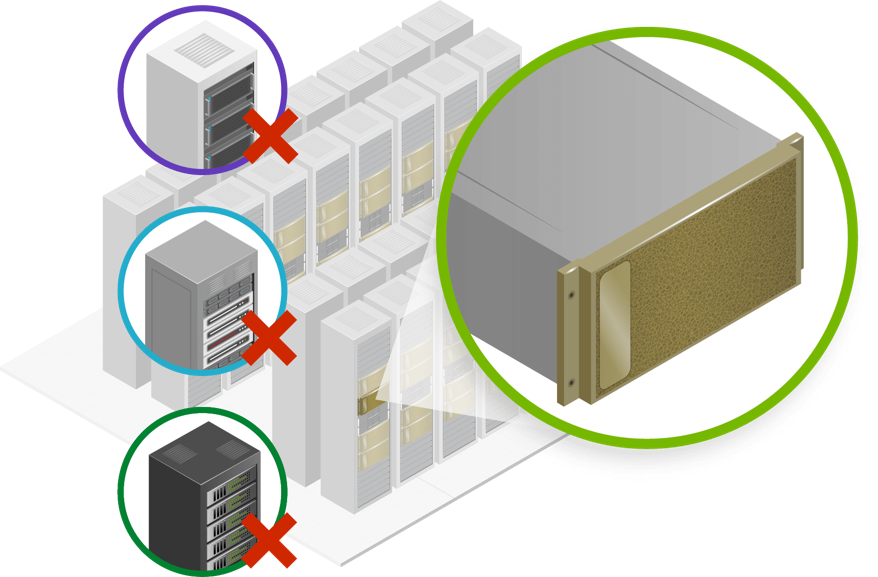Sify elevated to Local Gold Partner Status in Akamai’s NetAlliance Partner Program
Chennai, India, December 12, 2017 – Sify Technologies Limited (NASDAQ: SIFY), the largest ICT service provider, systems integrator, and all-in-one network solutions company on the Indian subcontinent, with global delivery capabilities, today announced that it has been elevated to Local Gold Partner status in the Akamai NetAlliance Partner Program. Akamai Technologies, Inc. is the world’s largest and most trusted Cloud delivery platform.
The Akamai NetAlliance Program was set up for companies to incorporate and combine Akamai’s technologies and services with their own products and services in order to create more robust and innovative solutions for their customers. For a partner to qualify as Gold Partner, they need to show consistent business growth over four successive quarters while helping organizations reduce infrastructure costs through off-load capabilities, extend services globally without capital investment, and increase the breadth and depth of partner product lines.
As a Gold Partner, Sify is now part of the league of Akamai partners who have advanced technical expertise across Solutions and Operations as well as having significant experience across different business verticals, including Government.
Sify has been a Silver NetAlliance Partner since 2014. The partnership is designed to help Enterprises, especially those in banking, finance, IT-enabled services, and manufacturing verticals to enhance Cloud adoption for business and functional applications.
“It is an honour for all of us at Sify Technologies to have been accorded the Gold local partner status by Akamai. As we extend and further strengthen our partnership, we believe that together, we will continue to enrich our customers’ experience by delivering consistent and high-quality content over the Cloud” said Kamal Nath, CEO, Sify Technologies.
Danny Mesrop, Senior Director, Channels & Alliances, APJ, Akamai Technologies, said, “I believe that India is on the cusp of a digital revolution that straddles users, Enterprises, and government-run organizations. In our endeavours to make the internet fast, reliable and secure for everyone, we work with partners like Sify to help deliver the best possible digital experience. Sify Technologies’ elevation to an Akamai Gold partner is a reflection of their capability in helping Enterprises to make the most of what the internet has to offer.”
About Sify Technologies
Sify is the largest ICT service provider, systems integrator, and all-in-one network solutions company on the Indian subcontinent. We’ve also expanded to the United States, with headquarters in the heart of California’s Silicon Valley.
Over 8500 businesses have become Sify customers. We also partner with other major network operators to deliver global network solutions. Our customers can access Sify services via India’s largest MPLS network. Among the very few Enterprise class player in India, Sify, today has presence in more than 1550 cities in India and in North America, the United Kingdom, and Singapore.
Sify, Sify Technologies and www.sifytechnologies.com are registered trademarks of Sify Technologies Limited
About Akamai
As the world’s largest and most trusted Cloud delivery platform, Akamai makes it easier for its customers to provide the best and most secure digital experiences on any device, anytime, anywhere. Akamai’s massively distributed platform is unparalleled in scale with over 200,000 servers across 130 countries, giving customers superior performance and threat protection. Akamai’s portfolio of web and mobile performance, Cloud security, Enterprise access, and video delivery solutions are supported by exceptional customer service and 24/7 monitoring. To learn why the top financial institutions, e-commerce leaders, media & entertainment providers, and government organizations trust Akamai please visit www.akamai.com, blogs.akamai.com, or @Akamai on Twitter.
Forward Looking Statements
This press release contains forward-looking statements within the meaning of Section 27A of the Securities Act of 1933, as amended, and Section 21E of the Securities Exchange Act of 1934, as amended. The forward-looking statements contained herein are subject to risks and uncertainties that could cause actual results to differ materially from those reflected in the forward-looking statements. Sify undertakes no duty to update any forward-looking statements.
For a discussion of the risks associated with Sify’s business, please see the discussion under the caption “Risk Factors” in the company’s Annual Report on Form 20-F for the year ended March 31, 2017, which has been filed with the United States Securities and Exchange Commission and is available by accessing the database maintained by the SEC at www.sec.gov, and Sify’s other reports filed with the SEC.
For further information, please contact:
Sify Technologies Limited
Mr. Praveen Krishna
Investor Relations & Public Relations
+91 44 22540777 (ext.2055)
Network Security, the key to VoIP adoption
With growing Internet infrastructure and new technologies, VoIP (Voice over Internet Protocol) has gained tremendous popularity among businesses. Regardless of size and industry, organizations are migrating their communication network from traditional PSTNs to VoIP. The wide-ranging benefits of the system are bound to attract businesses from across the board – reliability combined with steep cost savings and a plethora of productivity-enhancing features make it the communication network of choice for enterprises.
But, in today’s landscape of increasing cyber-attacks, VoIP must also strengthen its security protocols to ensure businesses are not left vulnerable to malicious cyber agents.
Main Security Threats faced by VoIP
VoIP networks are open to the following threats
- Identity and service threat – this usually involves eavesdropping and phreaking – Eavesdropping is a scenario in which attackers infiltrate the VoIP lines to listen in to conversations to gain access to sensitive business data or private information and accounts to carry out corporate sabotage or identity theft. Phreaking is a term used for the practice of passing off call charges to other accounts by getting unauthorized access to their VoIP service.
- Viruses and Malware – the bane of all Internet-based services – VoIP services are also open to attacks by malware, worms, and viruses.
- Denial of Service – Another threat that is used most often against Internet-based services – DOS can bring the communication network to a halt by flooding it with unnecessary messages.
- Call tampering – call tampering refers to the practice of interrupting the call by injecting noise packets in the network or withholding call packets to cause call delays and poor call quality. Call hijacking is another form of call tampering in which an outside party enters the call and tricks the person on the other line by masquerading as the original caller.
How are VoIP service providers countering these security challenges?
Service Providers understand that the continued popularity of VoIP services depends, to a large degree, on how secure and comfortable businesses feel while using these services. The VoIP providers and organizations have given top priority to securing their communication networks and have spent the considerable amount of effort and money in putting together some of the most cutting-edge security solutions to safeguard their systems.
The threats listed above can be taken care of by a judicious mix of preventive measures –
- SBCs (Session Border Controllers) – SBCs manage VoIP protocol signals and with in-built security firewalls they are the first and one of the most effective lines of defense against cyber threats.
- Anti-virus – installing and operating an updated anti-virus or anti-malware on all connected computer hardware is especially important as they can enter the VoIP network through unsecured channels.
- Encryption – usually provided by the service providers as an add-on service to secure the network and is highly recommended for enterprise users. VoIP encryption is especially important when the organization has many users connecting from outside the office network – from mobiles or from home devices.
- Call restrictions, authorization, and passwords – businesses must restrict access to the VoIP network by making sure that only the required people are given access to the network. This along with call restrictions, to track and monitor call activity and stringent password policies can ensure that people within the organizations are made aware of the importance of keeping the network secure.
- Deep Packet Inspection (DPI) – DPI monitors the network and can identify extra or fraudulent data packets and flag them for review.
- VoIP authentication protocols – the most stringent of these protocols is the so-called three-way handshake – Challenge-Handshake Authentication Protocol (CHAP) uses a three-step process to test the legitimacy of the incoming messages and is far superior to basic password protection which is widely used.
Conclusion
While the future of VoIP services is secure – the benefits of the technology ensures that – security concerns that have dogged all Internet-based services are also giving network engineers sleepless nights. From cloud platforms to on-premise IT infrastructures, all systems have vulnerabilities that can be exploited and as Cyber-attacks become more aggressive and better organized no one is truly safe.
It is estimated that the global cost of cybercrime will reach $2 trillion by 2019 – keeping these numbers in mind organizations can no longer count on just plain old luck to keep their businesses safe, they need to be prepared for the worst. And this is especially true for mission-critical functions like communication!
Here, VOIP is clearly the solution of choice for organizations looking for a secure communications network.
The 3 core components that make up Enterprise Collaboration Services
A lot is being written these days about the increasingly important role of communication and collaboration services in running a business smoothly. As the world becomes more connected and doing business across vast geographies becomes the norm – the expectation of the employees, clients and end customers also rise – employees and clients demand to be connected 24×7 from anywhere in the world and customers expect near instantaneous resolution of their problems.
In this scenario, most organizations need to revaluate their collaboration systems. Several ICT players have harnessed technology to provide solutions that allow real time collaboration across devices – making it easier for people to work together without wasting time and money in traveling across distances.
Many of you might wonder what services are available under the umbrella of collaboration services and this is just what we will address below.
Components of Collaboration solutions
A comprehensive end-to-end Collaboration solution has three main components –
Audio Visual Collaboration Solutions
A few years ago, AV collaboration meant basic video conferencing solutions from fixed meeting or boardrooms, but service providers are now leveraging latest digital technologies such as cloud computing to offer exceptional communication and collaboration services to users, where they are – either within office or outside.
This includes a Wide Range of Services and Solutions with Capex and Pay-as-You-go models–
- Basic Video conferencing
- Mobility solutions to connect people on the go
- High end bridging solutions
- Large display solutions for niche applications such as NOCs and digital signage.
- AV integration solutions for creating immersive communication environments for large areas such as board rooms, VC rooms, auditoriums etc.
Collaboration services also offer additional functionalities and benefits – recording and streaming facilities, integration with business applications, flexible and user-friendly interface etc. And businesses have added flexibility in terms of using these services either as an on-premise, hosted or hybrid model.
Hosted Contact center solutions
The second element of collaboration services is tailored to the needs of businesses – small, medium or large – whose business models revolve around customer interactions which necessitates the need to run customer care centers.
Customer experience during their interactions with provider organizations are key business drivers and hence critical to businesses. To enable enhanced customer experience, Contact center solutions have evolved over years with the help of state-of-the-art technology. These technologies are normally Capex intensive. However, today businesses can opt for Contact center-as-a-service model which has no upfront CAPEX costs and is completely flexible and scalable. This as-a-service model allows businesses to outsource all the technological aspects of contact centers and concentrate on their core business operations.
VoIP security and TDM to IP conversion with SBCs
VoIP services have taken on a mission critical role in many organizations, hence it is imperative to protect and isolate the VoIP infrastructure from external threats and allow seamless communication between multiple voice devices.
VoIP security forms an important component of Collaboration services. With SBCs (Session Border controllers) organizations can centrally manage VoIP policies and bandwidth for VoIP devices and applications and protect the network from cyber-attacks.
One of the hallmarks of a successful enterprise is how well its employees work together as a team. Teamwork and Collaboration is essential for running a successful organization, more so in today’s global workplace. Professional collaboration solutions based on the latest technology delivers on several fronts – cost, productivity and flexibility – and for many organizations is one of the smartest business moves for staying competitive in the current global marketplace.
When it comes to providing collaboration and communication services to organizations spread over continents, Sify which is a pioneer in Voice and Data services, with its decades of experience in data communication solutions, network integration services, Data Center services and application integration services can provide enterprise grade collaboration services to verticals ranging from Healthcare, IT/ITes, Manufacturing, Retail, Education and more.
VoIP services – How does it work?
The world over, communication – reliable and secure – is taking on a more critical role in the functioning of organizations and businesses. The more geographically spread your organization is, the more important it becomes to keep communication networks up and running.
Voice Over Internet Protocol (VoIP) has gained tremendous traction over the last decade and has become a popular choice for organizations looking for cost-effective and reliable communication networks to manage their growing business – VoIP services market is predicted to expand 10 % every year until 2021 and touch $140 billion.
What is VoIP (Voice over Internet Protocol)?
VoIP services use Internet connections to make phone calls. The analog voice signal is turned into data packets and transmitted over the Internet, enterprise local networks or Wide area networks. Apart from voice data, VoIP also transmits multimedia content over IP networks.
How does VoIP work?
VoIP has become an increasingly popular choice for business communications and provides a stable alternative for traditional telephone networks known as Public Switched Telephone Networks(PSTN).
VoIP provides a reliable and secure communication channel with highly cost-effective models. To understand how VoIP can achieve this, one needs to look at the technology behind the services.
VoIP uses a codec to encapsulate audio into data packets and transmits them across an IP network and decapsulates them back into audio at the other end of the connection. VoIP uses standard codecs by the International Telecommunication Union, such as G.711 for transmitting uncompressed packets, or G.729 for compressed packets. This compression is typically used to decrease bandwidth requirements.
After it is encapsulated onto IP, voice data is transmitted via the real-time transport protocol or through its encrypted variant, secure real-time transport protocol. The most common communication protocol is Session Initiation Protocol (SIP) and is used for signaling that is necessary to create, maintain and end calls.
In an enterprise setup, VoIP emulates the traditional telephone networks with dedicated instruments – endpoints include applications running on mobile devices or dedicated desktop VoIP phones. VoIP is also available as a computer to computer service wherein you don’t need any extra hardware – calls can be made directly from the computer with just a microphone or a soundcard – the most popular example of this is Skype!
In many organizations, there may be an existing PBX system and VoIP system can use a SIP codec to connect with the PBX and allow it to manage user phone numbers; gateways to connect networks and provide failover in the event of a network outage.
VoIP networks have several other components such as session border controllers to provide security, call-policy management and inter-operator network connections. VoIP also has a host of additional functionalities which help users and management to operate smoothly – these are location-tracking databases for call routing and management platforms to collect call-performance statistics for voice-quality management.
Conclusion
A peek into the VoIP technology lays bare the reason for its popularity, especially among businesses – while cost savings may be one of the main reasons for migrating to VoIP (on an average, businesses can save between 50 – 75 % after switching to VoIP), businesses have consistently seen enormous jumps in productivity thanks to additional functionalities such as unified communication and telecommuting. In the current market scenario, where customers expect quick responses and a seamless customer experience is key to business success, VoIP has quickly become the only communication choice for most organizations.
As India’s first ICT Company to be listed on NASDAQ, Sify has years of experience in providing reliable and secure Network Integration services to enterprises across industry verticals.
Our cutting-edge networking services ensure reliable data connectivity services as well as the best-in-class Voice services in India – all available as cost-effective payment models aligned to scale with the growing needs of individual businesses.
5 Key VoIP features that Empower Businesses
During the early days of the VoIP (Voice over IP) technology, it was surrounded by skepticism over its long-term viability and its suitability across industries. However, the past decade has seen VoIP being firmly recognized and implemented across businesses of every size and industries of every nature.
VoIP in its current evolved form offers many such features that help provide increased functionality, cost-effectiveness, and improved efficiency. Beyond the basic options such as voicemail, call waiting and call forwarding, there are many strategic features that empower businesses.
Security
Security for its communications is fundamental for all businesses. VoIP offers that by adding a layer of security for all voice communications and encryption for media and other data. Most Voice over IP providers use Multiprotocol Label Switching (MPLS) at both ends, ensuring greater security for the users.
Mobility
VoIP solutions enable remote operation, giving the employees and managers, spread across vast geographies, access to constant and reliable communication, even when they are away from their offices. It reduces the requirement to travel, allows them to telecommute and increases team productivity. It also presents a wide reach across borders for the businesses at a nominal cost.
Scalability
As against a traditional alternative, where scaling up translated into expensive hardware and access to basic features entailed a minimum set-up size, VoIP uses the limited resources of money, space and manpower more efficiently. There is a reduced requirement for infrastructure freeing up physical space. There is a built-in flexibility of ‘pay per use’ that allows a business to scale up or down without the prohibitive expense of redundant infrastructure/ related software or the associated time to implement and operate the revised solutions.
Unified Communications
Unified communications (UC) fuses and brings together all corporate communication channels such as voice, chat, video, mobile and email as a part of a single integrated suite. UC, when linked with the right business processes, can dramatically amplify productivity. This is especially significant in industries with a sizeable and continuous customer interface as it provides customers with greater flexibility while communicating with the company. UC makes it possible for businesses to maintain a single easy-to-manage network instead of wrestling with different infrastructures for voice, data, and video.
Analytics
VoIP provides the businesses with an option for analysis of their interactions with their employees and the customers. The nature of the industry that these businesses operate in, determines the level of analytics that they need. However, the information is made available for all interactions with the VoIP solution. The analysis could be used to benchmark call efficiency KPIs, reduce turnaround time for troubleshooting, track call quality, agent or team specific metrics or even for compliance purposes. VoIP systems offer call recording and built-in reporting tools to support a business’ unique objectives.
These features and functionality offered by a VoIP (Voice over IP) solution can positively impact team productivity, customer relations, and core business operations. VoIP solutions can achieve this by enabling employees to work efficiently while juggling multiple devices, working from remote locations or constantly traveling for work.
Additionally, the constantly evolving nature of technology ensures that innovative new features are incorporated in the VoIP solution on a regular basis. As VoIP solutions ably support the new environment and scale quickly as the business grows or shrinks, it would have a significant influence on businesses over the next couple of decades.
As India’s first ICT Company to be listed on NASDAQ, Sify has years of experience in providing reliable and secure Network Integration services to enterprises across industry verticals.
Our cutting-edge networking services ensure reliable data connectivity services as well as the best-in-class Voice services in India – all available as cost-effective payment models aligned to scale with the growing needs of individual businesses.
Cloud Driving Transformation in the Healthcare Sector
The “Sify: Power Discussion” hosted at the “Healthcare Senate & Healthcare Information Technology Summit 2017” organised by the Indian Express Group and Sify Technologies discussed the various benefits that cloud can bring to the Indian healthcare sector.
The CXOs who participated in the power discussion hosted by Sify shared their challenges in the ICT space and subsequently, various views were shared by the panellists and Sify on how the cloud technology can solve their pain points and finally help in building better patient experience.
Summary of Challenges
- Increasing Data volumes is becoming unmanageable in preserving, optimising and retrieval of data. The Cost associated with that is also an issue.
- Can IT play a role in reducing the time of the patient in “Check-in / Checkout/ Post Checkout Care”?
- Challenges in the Inter-departments users of IT systems at the hospitals. For example, the HIS at times hasn’t been successful in reducing the pain points of the doctors with Care Teams.
- Disparate IT systems do not talk to each other and are not compatible, so there should be a common platform that allows different technologies to work seamlessly.
- Hospitals should prioritise in terms of what they want to achieve and accordingly how IT can play a role. At times, the perception is that IT has a magic wand, and any problem in hospital, IT is made a scapegoat.
The Case for Cloud Computing
Anindya Sen, Transformation – Evangelist, Sify Technologies, spoke extensively on how cloud can solve various challenges faced not only by the IT function but also the functions in the hospitals. He started with a specific example of the cloud implementation for the radiology department at Cancer Treatment Services International (CTSI). In each of the twelve CTSI hospitals, which were hitherto running on separate IT systems, were now completely moved on cloud. The data was now directly fed to the radiology departments of these twelve hospitals. It helped radiologists to serve the patients by doing targeted radiation.
One of the panellists asked about how cloud can reduce cost for the organisations. Cloud can significantly slash costs for companies who want to serve multiple locations using the cloud technology, however, the cost advantage might not fructify if it were a single location. Nevertheless, the benefits of cloud beyond cost parameters only were discussed for such scenarios.
A specific discussion happened in terms of healthcare industry where in spite of adopting Cloud, the IT team still has a task at hand in managing end points, their networking, etc. Network-as-a-service, a relevant example in this case was discussed to take the pain away from internal network management. Sify has provided “Network as a service” to many companies having a wide geographical presence using the cloud model.
The panellists were of the consensus that different components of IT like networks, applications, different patient systems etc. on cloud hosted by a single CSP, who partners with different domain experts and partners can unleash the potential that cloud can offer.
Sify explained a case study of Uttar Pradesh Power Corporation Ltd (UPPCL). Sify has hosted the IT infrastructure, end-to-end on cloud, partnering with the right domain experts and service providers for the various components of the IT infrastructure be it network, security, antivirus etc. The customer pays Sify on “Per Bill generated i.e. Outcome Based Model”.
With this model, the role of the CIO will focus not on “Switch on – Switch off issues” but concentrate on the Innovation, Patient Experience, Improve Inter-Departmental Coordination, Post Checkout Patient Care, etc. Various other models like per bed, per patient were also deliberated.
There is also a lot of potential waiting to be tapped in the on-premise cloud space. On premise cloud fits well with organizations having large IT resources in-house. IT and FMCG companies are a nice fit. Sify provides their infrastructure and services to these companies. This model was suggested by panel members specifically for concentrated IT landscapes.
With global issues like Global warming, floods are becoming more frequent and thus the availability of systems can get affected. One of the panellists spoke about how during the Chennai floods, because the systems were hosted in one place in Chennai, the hospitals in other cities were affected however in one of the similar instances of floods, this was avoided because now the systems were working on cloud. This brings in the case for DR as a service. Cloud can also be helpful in bringing innovation in IT processes.
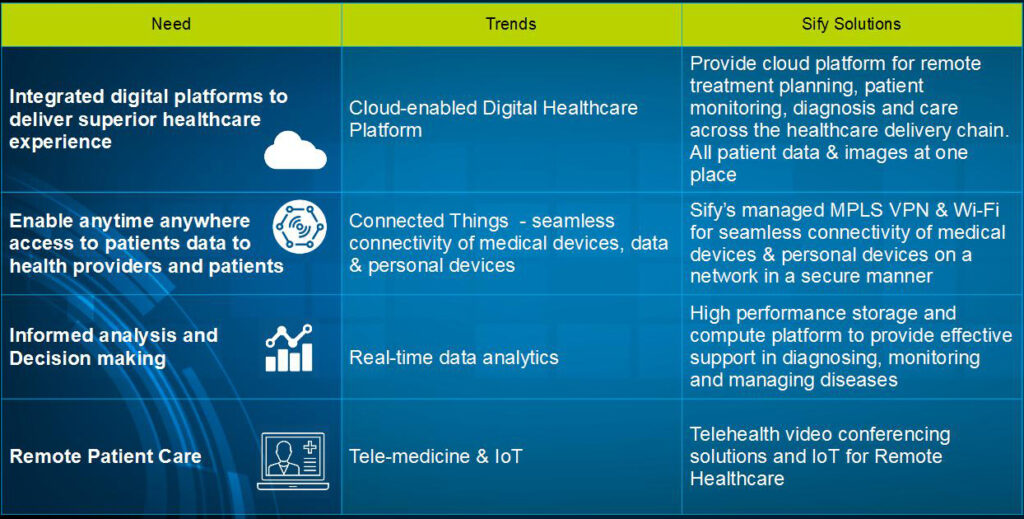
The Potential of Telemedicine
Telemedicine has not been able to take off in India and the reasons to which were discussed. Various suggestions on how telemedicine can be made more reasonable for the medical community and patients alike.
One of the reasons, as a panellist claimed, that was not allowing telemedicine to take off is there is no certainty on who will bear the cost. It works for the government, who pays for it entirely however for private hospitals, there is no business model.
Notwithstanding, telemedicine can be useful for patient scheduling, touchpoints, delivering care and administration process. There was also a broad consensus that telemedicine can be tremendously beneficial for secondary care i.e. once the patient has visited the doctor personally and his case is well understood by the doctor, the patient need not visit him the next time.
The treatment can happen using telemedicine unless it is necessary for an in-person visit. So the school of thought in the healthcare industry about the necessity to give the touch and feel for the patient is reducing and is a myth. With IoT technologies, the medical devices are also getting connected and this can be a contributing factor for the emergence of telemedicine in India.
Conclusion
On the whole, it was a good participative discussion where the various points of view from the Business side, IT side and the service provider angle were discussed. Obstacles as well as advantages for adopting an agile cloud based model were deliberated upon and a need for business outcome based model to help IT and business alike was unanimously agreed upon.
New technologies and solutions – such as mobile apps, cloud computing, the Internet of Things, and analytics – are available to make healthcare organizations more accessible, simpler, faster, and more cost effective.
Whether you represent a hospital, clinic, or specialist, Sify has a variety of scalable, agile, and secure solutions to help your organization achieve these goals.
Delegate Participants:
- Manoj Kumar (Apollo Health & Lifestyle )
- Santosh Patil (Asian Cancer Institute)
- Dilip Ramdasan (Dr. Agarwals Eye Hospital)
- Nallamuthu Sivaraj (Gem Hospital)
- Rajesh Kumar Gupta (Medanta – The Medicity)
- Jai Prakash Dwivedi (Rajiv Gandhi Cancer Institute & Research Centre)
- Ramesh Desai (Sagar Hospitals – Banashankari)
- Sachin P Marathe (Sapphire Hospitals)
- Niranjan Kumar Ramakrishnan (Sir Ganga Ram Hospital )
- Maneesh Agarwal (Apollo Hospitals)
- T S Mohan Kumar (Brindhavvan Areion Hospitals)
- Kvs Sesha Reddy (Brindhavvan Areion Hospitals )
- Ashim Kumar (CARE Hospital)
- Selwyn Colaco (Cytecare Cancer Hospitals )
- Naveen Nagar (HCG )
- Manisha Pal (Hiranandani Hospital)
- Paritosh Joshi (Kasturba Vaidyakiya Rahat Mandal)
- M. S Guru Prasad (Narayana Health )
- Manoj Chavan (Sir HN Reliance Foundation Hospital & Research Center )
Sify Participants:
- Subramaniam Ramakrishnan
- Anindya Sen
- Sonia Kaul
- Sanjay Gour
- Sagar Pattnaik
- Abhinav Gupta
Traditional vs VoIP- What’s best for your business?
As more and more businesses, both big and small, are jumping on the VoIP (Voice over IP) bandwagon, it is interesting to examine what is causing this exodus from the traditional alternative of PSTN (Public Switched Telephone Network) including Mobiles and Landlines.
In order to understand the reasons for the switch, it is important to first appreciate what is significant for these businesses while opting for a communication system. The chief concerns for businesses, irrespective of their size, while choosing a network are,
- How to reduce costs and at the same time not compromise on the quality of the communication system.
- Is there a way that would improve communication with customers and employees and better connect them?
- How to achieve more value for your money and get additional features at the same cost.
- Can the communication system contribute to an increase in efficiency and productivity?
As VoIP addresses these concerns and provides a powerful tool for businesses to ‘up their game’, enterprises in increasing numbers are opting for this alternative.
Cost-Effective Choice
A VoIP solution has a definite edge over its PSTN alternative as it offers free CUG (VoIP-to-VoIP) calling for both local and international. The calls made to mobile and landline phones through VoIP have nominal subscription fees as against a much more expensive PSTN alternative. The sound quality is continually improving as the technology is evolving, providing superior communications and better filtering of background noise with VoIP. Its online conferencing and other features help reduce the requirement for travel. It also has a lesser bandwidth requirement (10 Kbps) than the PSTNs (64 Kbps).
Improve Communication with Customers and Employees
VoIP provides unified communication, helping the employees to work remotely from any place with an Internet connection and ‘take the office’ with them. It also provides the ‘presence’ technology that enables users to see if employees are available and accordingly get in touch with them. PSTNs on the other hand, are able to provide the remote extension facility only with dedicated lines for each extension and hence are very expensive.
More Value for Money
VoIP solution provides an ease of scalability without adding significant infrastructure and cost to the decision. Additionally, VoIP offers call waiting, call forwarding and call transfer options as a standard offering, but the same is available in PSTNs at an additional cost.
Increased Efficiency and Productivity
VoIP has an edge over its traditional counterpart as it allows businesses to get enterprise class software at an affordable cost. As the cost of scalability is low, even smaller businesses can enjoy customized solutions with many features as standard or as an affordable add-on. These lead to increased productivity, less down time, and hence more profit. However, as the service terminates when the Internet connectivity (power) is lost, organizations must have a VoIP backup plan. PSTNs, nevertheless, are able to continue service during power outages, as phone jacks do not require electricity.
Hence, traditional choices such as PSTNs are making way for VoIP as the latter are proving themselves as a powerful tool, giving the businesses a competitive edge and providing the ‘right-size’ technology at an affordable price.
As India’s first ICT Company to be listed on NASDAQ, Sify has years of experience in providing reliable and secure Network Integration services to enterprises across industry verticals.
Our cutting-edge networking services ensure reliable data connectivity services as well as the best-in-class Voice services in India – all available as the cost effective payment models aligned to scale with the growing needs of individual businesses.
CCaaS – Using technology to enhance customer engagement
The business world has always been competitive, but never before has the battle for customer loyalty been fiercer.
Organizations are plowing in more money and effort to step up their customer care strategies and with good reason! Reports and surveys reveal the importance of customer engagement in buying decisions – 86% of the consumers are willing to pay more for better customer service and 54% of Millennials say that they stopped doing business because of poor customer service.
In these competitive times, businesses have turned to technology to get the most out of their contact centers and to provide a pleasant customer experience to buyers.
When it comes to using technology to optimize Contact Center functions – CCaaS (Contact Center as a Service) instantly springs to mind. It is the perfect example of using cloud-computing platforms to integrate the latest technology with your contact center while keeping costs low.
Contact Center as a Service – Key Technologies
Inbound & Outbound Call Automation
There is a great deal of technology behind every call that comes into a call center. Some of these are automatic call distributors (ACD) – intelligent routing of calls to agents, IVR (Interactive voice response) – automated phone system providing information to callers, voice biometrics, intelligent call back, universal queuing, call recording and now, of course, integration of multiple communication channels to provide customer engagements across all platforms.
For agents making outbound calls, technologies such as predictive dialer – automatically dial from a contact list, campaign management systems and email response management software helps in increasing productivity.
System Integrations
With services like CCaaS, contact centers can access a wider level of integration across the organization. From integrating existing knowledge database (comprising customer profiles, call histories, buying trends, etc.) to business CRM software – access to a plethora of information allows agents to serve customers better and faster. CCaaS also facilitates secure online payments via integration with bank websites and bank mobile applications.
Quality check and Admin Control
Call monitoring and call quality control has now been enhanced by adding new systems such as an administrative control dashboard with a range of web supervisory features from silent monitoring to whisper coaching. Supervisors can now observe and step into help agents and prevent unpleasant experiences.
Analytics
With the explosion in Internet usage, data analytics tools are becoming more and more refined and for predicting customer behavior, contact centers must also utilize analytical tools to better understand customer feedback and needs. While all contact centers use real-time reports & analytics to evaluate and improve agent performances, there is also a move towards incorporating speech, chat, and text analytics to identify customer needs.
Customer experience is all set to overtake product and price as the most vital component of the business strategy by 2020.
There is no doubt that with the rise of social media and increasing use of Internet, more choices have opened up for buyers and they have become more aware and better informed. Organizations are well aware of this and are investing more and more in gaining and retaining customers – along with enhancing the human interactions by providing the right training, integrating technology is the only way organizations can hope to handle the huge volume of multi-channel customer contacts, smartly while being cost-efficient.
Sify Technologies partners with Interxion Marseille to cater to the burgeoning demand in traffic between India and Europe
Chennai, 11 August 2017: Sify Technologies Limited (NASDAQ: SIFY), a leader in Telecom and Data Center centric IT services in India with global delivery capabilities in partnership with INTERXION HOLDING NV (NYSE: INXN), a leading provider of carrier and cloud-neutral colocation Data Center services in Europe, today announced the launch of its 7th network Point of Presence (PoP) at Interxion’s MRS1 Data Center in Marseille, France.
Sify’s network expansion to Marseille enhances its ability to provide very high availability network of mission-critical applications between Europe and its 9000+ Enterprise customers on the Indian sub-continent. In addition, Sify can now enable interconnect for their wholesale partners seeking state-of-the-art solutions to reach India from Marseille, Europe’s gateway to India, the Middle East and Africa. Sify now connects all the major global data-transit locations with these 7 PoPs.
“With four submarine cable systems from India landing directly in Marseille, it was the logical location for us to expand our network presence,” said Mark Ryder, Managing Director Europe, Sify. “The large and growing community of network and content providers available to partner with in Marseille accelerates our ability to cater to the burgeoning demands of our clients.”
“Sify will provide our customers with effective solutions to efficiently handle the large increase in content that is being exchanged between Europe and India,” said Mike Hollands, Director of Market Development and Strategy, Interxion. “Sify’s connectivity to 1500 cities and 45 Data Centers in India over a common data telecom infrastructure provides huge value to the community of interest present in our Marseille facility.”
Interxion Marseille is Europe’s telecommunications gateway to India, Asia, Middle East and Africa. With 13 submarine cable systems form these regions terminating in Marseille, the city has become a fast-growing interconnection hub. There are now 120 international and national network service providers, four Internet Exchanges and leading cloud and content providers using Interxion Marseille to interconnect and exchange Internet traffic and content with one another.
About Interxion
Interxion (NYSE: INXN) is a leading provider of carrier and cloud-neutral colocation Data Center services in Europe, serving a wide range of customers through 45 Data Centers in 11 European countries. Interxion’s uniformly designed, energy efficient Data Centers offer customers extensive security and uptime for their mission-critical applications. With over 600 connectivity providers, 21 European Internet exchanges, and most leading cloud and digital media platforms across its footprint, Interxion has created connectivity, cloud, content and finance hubs that foster growing customer communities of interest. For more information, please visit www.interxion.com.
About Sify Technologies
Sify Technologies Limited (NASDAQ NM: SIFY), is an acknowledged ICT leader in the Telecom and Data Center centric IT services space with global delivery capabilities. Among the very few Enterprise class player in India, Sify, today has presence in 1500 cities in India and in North America, United Kingdom and Singapore.
More than 9000 Enterprises access Sify’s IT services that’s focused on the Data Center and Cloud platform and connected through India’s largest MPLS network. As a truly converged ICT solutions and services provider, Sify is the preferred IT Services partner with a full suite of services ranging from Telecom connectivity services to Data Center transformation services along with Application and Security Services delivered on the same infrastructure.
Sify, Sify Technologies and www.sifycorp.com are registered trademarks of Sify Technologies Limited
For further information, please contact:
Mark Ryder
Operations – UK & Europe
(M) +447429169426
mark.ryder@sifycorp.com
Sify Technologies Limited
Praveen Krishna
Investor Relations & Public Relations
+91 44 22540777 (ext.2055)
praveen.krishna@sifycorp.com
20:20 Media
Nikhila Kesavan
+91 9840124036
nikhila.kesavan@2020msl.com
Grayling Investor Relations
Shiwei Yin
+1-646-284-9474
Shiwei.Yin@grayling.com
The trends and technologies shaping the future of Contact Centers
Contact Centers are in a state of constant evolution! With customer engagement rated as one of the most critical factors for the success of a product or service, businesses are striving to perfect the customer care scenario every single day. In this race to keep customer loyalty, companies are turning to technology to deliver exceptional customer service.
In the last couple of years, to keep up with the changing needs and behavior patterns of buyers, Contact Center technology has evolved considerably. We take a closer look at some of the latest trends in the field.
The trends and technologies shaping the future of Contact Centers
Digital Transformation of Customer Services
The digital way of working has now been fully embedded into the business operations of most companies. As newer technologies such as cloud, web based applications, mobility, and data analytics change the business landscape they also have an impact on how contact centers are operated. Adoption of these technologies, especially the move to cloud platforms, has resulted in altering the entire cycle of customer engagement – from dealing with the first client contact occurring across multiple channels to providing intelligent, data analysis backed the resolution to customer issues.
Omni channel Models
From traditional phone calls to social media messages – Customers are using a variety of communication channels to approach businesses. Needless to say, businesses are also turning to a more holistic customer engagement approach that uses unified Omni-channel communication models – bringing text, phone, chat, email, social, video calls, etc. under one umbrella – to provide a more personal and satisfying experience to the customer.
Analytics and Customer Satisfaction
To consistently deliver exceptional customer experiences, businesses need to consider more than the final resolution of the customer requirement; it is imperative to keep a check on the customer experience during the journey towards resolution and overall quality of the calls. This can be achieved by using analytical tools to improve the Contact Center operations. Customer care centers are using real time reports and monitoring solutions to keep a check on engagement quality and are also incorporating cutting edge analytical tools to study behavioral patterns in speech, text or chats to predict customer behavior.
Remote agents
With reliable web based communication tools and access to real time monitoring Contact Centers are now employing more and more remote agents; thereby efficiently managing different time zone requirements while reducing overhead costs.
Artificial Intelligence
AI, the latest buzzword in the IT landscape, is now being tested and incorporated in Call centers as well. AI algorithms are mainly being used to analyze call data and historical records to foretell customer behavior – producing dependable results in minutes, something that would have taken an analyst days to complete. AI technology is also being explored to place virtual call agents to handle some of the more repetitive and simpler customer interactions.
Going ahead, companies and consumers alike will be putting more and more emphasis on customer care as a brand differentiator rather than as a support function. Although recruiting and training agents form a vital part of call center operations; to stand out companies are exploring technology integrations to make their operations more efficient. And while technologies like Artificial Intelligence are still being developed and implemented, sophisticated cloud based offerings such as CCaaS (Contact Center as a Service) are proven models, which bring an added level of productivity with enormous cost benefits to traditional Contact Centers.
As India’s leading fully converged ICT Company, Sify is using its decades of experience in network and Data Center services to present the most comprehensive Contact Center as a Service platform in India.
Our extensive expertise has allowed us to craft a service offering, which is highly flexible, scalable and future proof. Sify’s CCaaS provides all Contact Center applications under one umbrella-from branch connectivity and video conferencing to 100 % reliable voice calls. Delivered via the cloud, Sify’s CCaaS is a multi channel platform, which can easily meet the most exacting contact center requirements.







